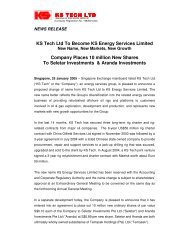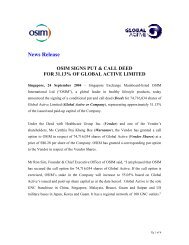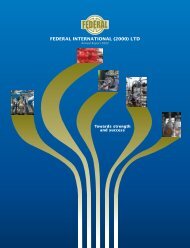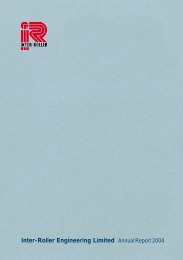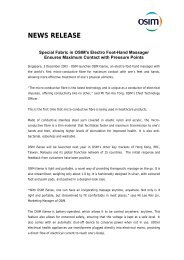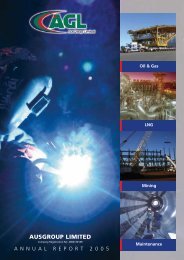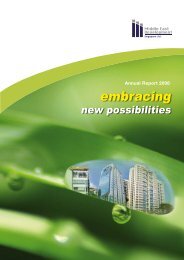Osim FR 050407.indd
Osim FR 050407.indd
Osim FR 050407.indd
- No tags were found...
You also want an ePaper? Increase the reach of your titles
YUMPU automatically turns print PDFs into web optimized ePapers that Google loves.
Notes to the Financial Statements - 31 December 2006 (cont’d)2. Summary of significant accounting policies (cont’d)2.13 Impairment of non-financial assets (cont’d)An asset’s recoverable amount is the higher of an asset’s or cash-generating unit’s fair value less costs to sell and its value inuse and is determined for an individual asset, unless the asset does not generate cash infl ows that are largely independentof those from other assets or groups of assets. In assessing value in use, the estimated future cash fl ows are discounted totheir present value using a pre-tax discount rate that refl ects current market assessments of the time value of money and therisks specifi c to the asset. Where the carrying amount of an asset exceeds its recoverable amount, the asset is consideredimpaired and is written down to its recoverable amount. Impairment losses of continuing operations are recognised in theprofi t and loss account or treated as a revaluation decrease for assets carried at revalued amount to the extent that theimpairment loss does not exceed the amount held in the asset revaluation reserve for that same asset.An assessment is made at each reporting date as to whether there is any indication that previously recognised impairmentlosses recognised for an asset other than goodwill may no longer exist or may have decreased. If such indication exists, therecoverable amount is estimated. A previously recognised impairment loss is reversed only if there has been a change inthe estimates used to determine the asset’s recoverable amount since the last impairment loss was recognised. If that isthe case, the carrying amount of the asset is increased to its recoverable amount. That increased amount cannot exceedthe carrying amount that would have been determined, net of depreciation, had no impairment loss been recognised for theasset in prior years. Reversal of an impairment loss is recognised in the profi t and loss account unless the asset is carried atrevalued amount, in which case the reversal in excess of impairment loss previously recognised through the profi t and lossaccount is treated as a revaluation increase. After such a reversal, the depreciation charge is adjusted in future periods toallocate the asset’s revised carrying amount, less any residual value, on a systematic basis over its remaining useful life. TheGroup does not reverse in a subsequent period, any impairment loss recognised for goodwill.2.14 Financial assetsFinancial assets are classifi ed as either fi nancial assets at fair value through profi t or loss, loans and receivables, held-tomaturityinvestments, or available-for-sale fi nancial assets, as appropriate. Financial assets are recognised on the balancesheet when, and only when, the Group becomes a party to the contractual provisions of the fi nancial instrument.When fi nancial assets are recognised initially, they are measured at fair value, plus, in the case of fi nancial assets not at fairvalue through profi t or loss, directly attributable transaction costs. The Group determines the classifi cation of its fi nancialassets after initial recognition and, where allowed and appropriate, re-evaluates this designation at each fi nancial year-end.All regular way purchases and sales of fi nancial assets are recognised on the trade date i.e. the date that the Group commitsto purchase the asset. Regular way purchases or sales are purchases or sales of fi nancial assets that require delivery ofassets within the period generally established by regulation or convention in the marketplace concerned.Notes to the Financial Statements 95Annual Report 2006





